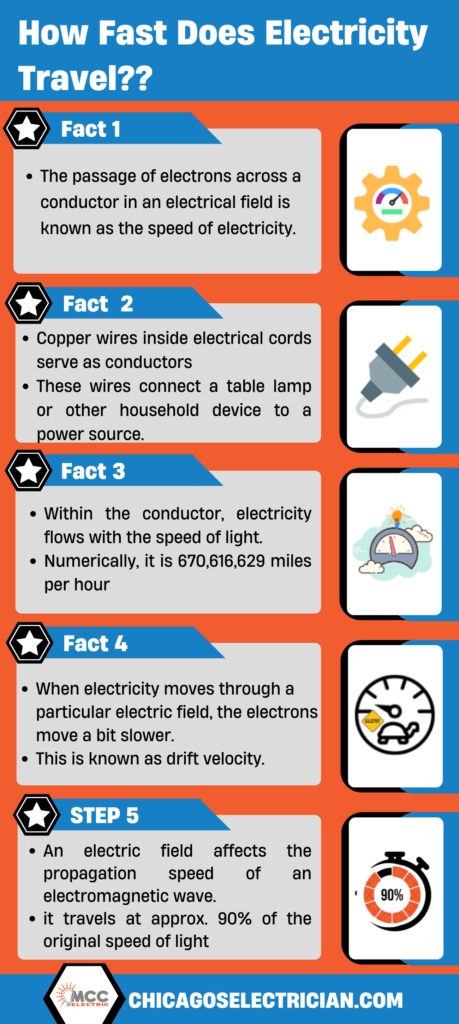While thinking about all the electrical appliances and electricity in general, have you ever thought about how fast electricity travels?
This might sound like an academic question. But you might have encountered a situation where you thought about how long it would take for your bulb to light once you switched it on. Thinking, right? That deals with the speed of light too.
So, if you have become curious about the speed of electricity, this article is for you.
Looking for an electrician in Chicago?
What is electricity?
Before we get to the speed of electricity, let’s discuss what exactly it is. It will help you understand the speed and other associated factors. Electricity is basically the flow of electrons in an electrical field. Mostly, electricity in homes transfers through copper wire.

Speed of Electricity in Wires:
If you have ever heard of the term “drift velocity” of electrons, it is the same thing as electricity in wires. If we compare it to the speed of light, the movement of electrons is relatively slow. Electrons do not travel at the same speed as light when the electricity flows in a wire.
When we talk about how fast electricity travels, it is important to understand the mediums of transportation of electricity. Consider a copper wire that is commonly used in household electrical wiring; the electrons in a copper wire travel at a speed of about 0.01 mm per second.
Yes, it’s slower than a snail’s pace! But, the movement of the electrons does not mean that the electricity is flowing at a slow speed in our devices. The effectiveness of the electricity solely depends upon the consistency of the flow.
Imagine there is a line of people, and they are passing buckets of water. The water is traveling from one bucket to another. Now, the people holding the bucket are moving at a slow pace, but the flow of the bucket and the water inside the bucket reaches the end quickly. The flow is consistent in the wire, and that powers up our devices.
Speed of electricity through the conductor:
You must know here that the flow of electricity through a conductor differs from the flow without it. Within the conductor, electricity flows with the speed of light. Numerically, it is 670,616,629 miles per hour.
Speed of electricity through a particular electrical field:
Now, talking about the speed of electricity through a specific electric field, you’ll find the electrons move a bit slower than the speed of electricity. This is known as drift velocity.
The electromagnetic wave created by an electric field in the conductor affects its propagation speed. You can expect it to move at approximately 90% of the speed of light.
What causes the difference?
When considering the conductor only, the electrons follow a random path, thus propagating with as much speed as possible. However, when an electrical field is introduced to the same conductor, the electrons no longer have a net velocity.
At DC Voltage, the drift velocity of the electron will propagate equal to the electrical field. In the case of AC Voltage, the electrons show no net movement. The electrons only oscillate over a few micrometers.
Summing up:
Theoretically, electricity travels at the speed of light. However, the actual speed might be a bit lower due to multiple factors, including the presence of the electric field. This is why your bulb switches on just as you put your switch on. It also indicates that you must be vigilant with the electricity as it can be dangerous.
Also Read: What is IC Rating for Lighting?




